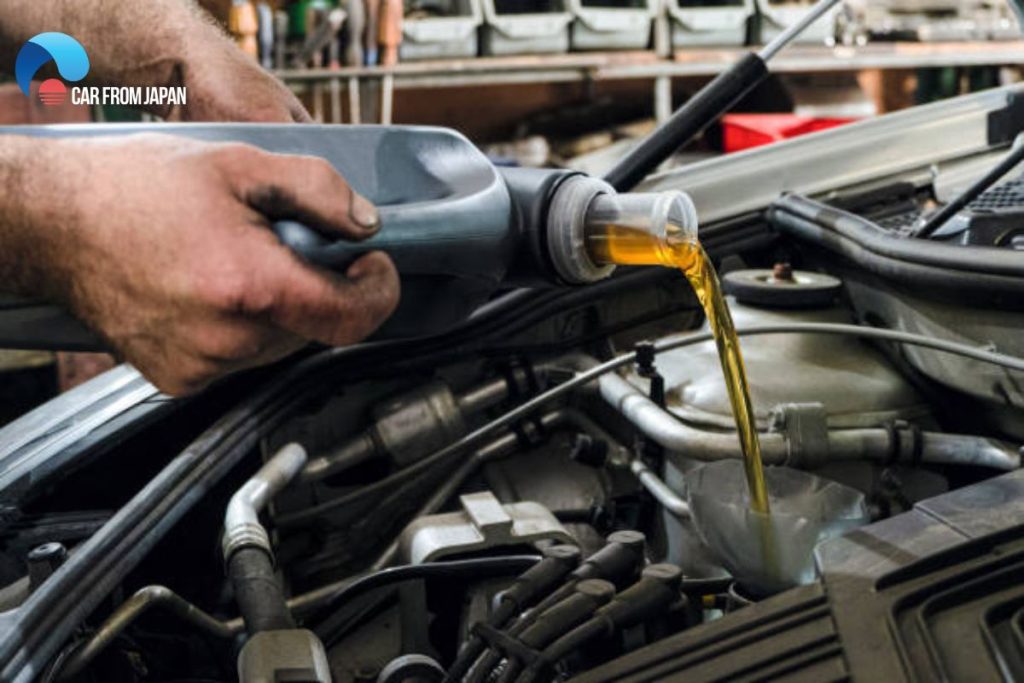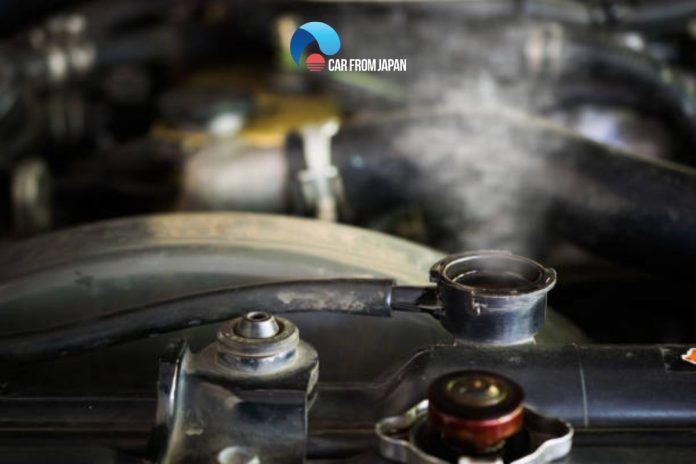To protect your car’s engine and reduce fuel waste, changing the oil periodically is a must. However, changing oil improperly can cause damage to your car. Related to the issues, one of the questions often being asked by drivers is Can you add oil to a hot engine, or should you let it cool? If you have the same concern, this article is for you:
Contents
- Can You Add Oil To A Hot Engine? Answer Here
- Should You Add Oil To A Hot Or A Cold Engine?
- What Is The Best Way To Change Engine Oil?
- Things You Need To Know When Changing Engine Oil
- 1. Changing engine oil even if your car hasn’t been run for a long time
- 2. The time to change oil depends on usage conditions
- 3. Replace engine oil with a type of suitable viscosity and quality.
- 4. It is not true that the thicker the oil, the better
- 5. Consider choosing between synthetic and conventional oil
- Final Thoughts
Can You Add Oil To A Hot Engine? Answer Here
Changing oil when the engine is hot or cold is one of the ongoing issues that many drivers debate without end. So who is right, who is wrong? and is it ok to add oil to a hot engine?
We will explain everything in this part. Our answer is “Yes”, adding oil to a hot engine can be acceptable if you are in a hurry or have some emergent cases. Changing the oil while the engine is hot also has its advantages.
When the engine is still warm, the oil in the car is in a liquid state. When changing the oil, it will flow out faster, saving a lot of time.
However, it reveals certain disadvantages. When the engine has just stopped and you drain the oil, there is still an amount of oil lying above the parts that have not returned in time, so the old oil won’t all flow out right away and when you replace it with new oil, it won’t be as effective, and the new oil will quickly change color.
Changing the oil will also be more difficult because the engine is still hot, and the car’s parts, including the engine oil, are at high temperatures, easily causing burns.

Should You Add Oil To A Hot Or A Cold Engine?
There is no obvious answer to this question. Car experts say that there are no specific standards for whether you should change the oil when the engine is still hot or cold, because each person will have their way of applying it.
For some models, such as Acura TSX or Toyota RAV4, the manufacturers recommend in the manual that we should check engine oil when the engine is warm. This is why it’s important to pay attention to your owner’s manual, so the answer for your car is going to be in that manual.
By letting the engine cool down and then changing the oil, all the old oil will be drained out, but the limitation is that the residue will settle at the bottom of the engine block and cannot flow out completely, once the dirt and iron film remain too much left in your engine will lead to faster engine wear, which is very dangerous.
What Is The Best Way To Change Engine Oil?
What’s the right way to do it? You should turn off the engine, let it sit for several minutes, then check the oil level on the dipstick and add more oil if necessary. In our opinion, if you leave it for about 10 – 15 minutes, almost all the old oil on the engine’s parts can flow out.
At this time, when draining the oil, all the accumulation will flow out. The oil should be left on for a while so that the remaining oil on the engine parts has enough time to flow down.
In case your engine is cold, you should warm up the engine first, then proceed to check and change the oil after 5-10 minutes. Oil burns are a very dangerous accident, so you need to wear protective gear to ensure safety when changing the oil.
Things You Need To Know When Changing Engine Oil
1. Changing engine oil even if your car hasn’t been run for a long time

Many additives in the oil perform different functions such as cleaning, anti-wear, anti-rust, anti-oxidation, and anti-foam; when performing these functions, these additives are gradually consumed, causing the oil to degrade and need to be replaced.
Therefore, even if your car doesn’t run frequently, the oil stored in the engine for a long time will degrade over time. The manufacturer also stipulates the oil usage period, which is usually 1 year; If after 1 year the vehicle has not reached the specified mileage, the engine oil still needs to be changed.
2. The time to change oil depends on usage conditions
There are concepts of having to change the oil after about 3,000 km, 5,000 km, or 10,000 km. All may be true, in some sense. Oil change intervals often depend on many factors such as the model and age of the vehicle, road and climate conditions, and the driver’s habits.
For old vehicles or those driven daily, the oil needs to be changed sooner. Cars running in the city with continuous start/stop mode also need to change oil more often than cars running on the road at a steady speed.
3. Replace engine oil with a type of suitable viscosity and quality.
To evaluate and choose oil, there are two standards that drivers need to pay attention to: API and SAE. API indicates whether this type of oil has all the necessary ingredients to perform the functions of cooling, cleaning, lubricating… or not. SAE both ensures engine lubrication and helps the vehicle start in harsh conditions.
4. It is not true that the thicker the oil, the better
Some drivers assumed that the thicker the oil, the better its lubricating ability. However, it is a single-grade oil, only ensuring high-temperature viscosity enough to lubricate the engine. Current oil is a multi-grade type that not only ensures lubricating viscosity at high temperatures but also helps the car start easily at low temperatures because it is not too thick.
5. Consider choosing between synthetic and conventional oil
If using regular motor oil, drivers need to remember to change the oil on schedule. Synthetic oil has a few outstanding advantages: it contains special additives that prevent sedimentation; Viscosity and oil flow is better in cold weather conditions (mountain areas, snow, and ice); it Maintains stable viscosity even at high temperatures (hot climate areas or sandy deserts).
Watch more:
Improperly changing oil causes many effects on the engine, and the lifespan of the vehicle, as well as many potential dangers for the driver. Therefore, car owners need to be proactive in changing oil periodically and properly to ensure optimal efficiency.
Final Thoughts
The key takeaway is this: you can add oil to a hot engine without fear of damaging it. The best practice is always to turn the engine off, wait a couple of minutes for the oil to settle back into the pan, check the dipstick, and then add what you need. That short wait is just for an accurate reading, not for the engine’s safety. Just be careful, pour slowly, and you’re good to go.



